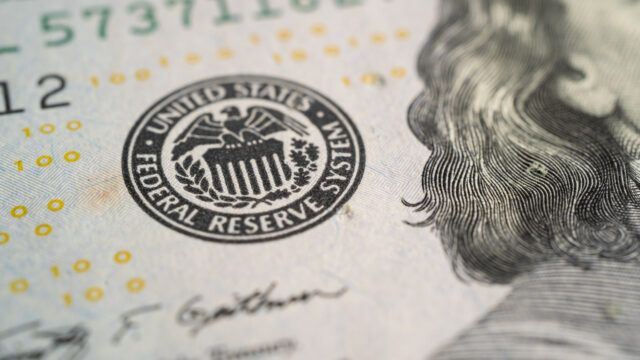US bond markets are not pricing liquidity risk appropriately despite more than a year of quantitative tightening (QT) from the US central bank, according to Amundi’s head of US fixed income, Jonathan Duensing.
In June 2022, the US Federal Reserve set in motion its plan to reduce the size of its then $9trn balance sheet in the form of quantitative tightening, effectively taking liquidity out of the marketplace.
But the liquidity spreads in some parts of the bond market are still not yet adequately pricing the impact of the Fed’s tightening program, Duensing told FSA.
“We recognise that liquidity spreads should be moving wider because the Fed is extracting so much liquidity from the overall economy and the markets in general,” he said.
“We don’t feel like we’ve seen an appropriate repricing in liquidity spreads across some segments of the marketplace.”
Typically, investors will demand a liquidity premium on top of the credit risk premium for buying riskier corporate bonds because they lack the same liquidity that US Treasuries offer during times of market stress.
However, the novelty of higher nominal yields in certain areas of the corporate bond market could be one reason why liquidity spreads are not as high as they should be.

Ever since the 2008 global financial crisis, Duensing (pictured) said that investors have been “wandering around the low interest rate desert” for more than a decade.
“Maybe what you’re seeing is investors are taking their eye off the ball as far as being compensated enough for credit risk or for liquidity risk,” he said.
He suggested that yields on offer for corporate bonds – some as high as 9% – may have shifted the focus for some investors to the absolute yield level, rather than focusing on whether they are being paid appropriately for the risks they are taking, particularly when it comes to liquidity risk.
Duensing flagged the high yield bond market as one area where liquidity spreads should be higher than where they are.
As tighter monetary policy works its way through the real economy, he anticipates that the high yield bond market will start to experience an uptick in defaults, although in a contained way relative to previous economic cycles.
Corporate default rates could conceivably reach 8% on a trailing 12-month basis, up from roughly 4% today, Duensing said.
As such, he warned that investors need to be very “thoughtful and selective’ about the exposures they’re taking in the corporate bond market.
A flight to quality bid
He also noted that because the spread valuations of the high yield bond market are still within their long-term averages, any risk-off scenario could see these spreads widen significantly.
“Spreads signal something that’s more indicative of a ‘coast is clear’ type of environment over the near intermediate term,” he said.
“We believe valuations don’t fully compensate you for some of those uncertainties that exist out there on the horizon, as it relates economic growth.”
He thinks that credit spreads could reach as high as 750 to 800 basis points over US Treasuries if the US economy heads into a slowdown in 2024.
In fact, Duensing’s central case is that the US economy will slow down “significantly” in 2024, and that there will be a “flight to quality” bid as investors anticipate easing monetary policy.
This is one reason why within Amundi’s fixed income portfolios, the team has been shifting exposures towards a longer duration bias, with a focus on higher quality credit.
“We’ve been extending duration, so we now have duration that’s longer than the market benchmark, as we just find that high quality fixed income offers a lot of interesting value right now.”
He added that within the investment grade corporate bond market, financials and banks on a global basis, look “pretty attractive” relative to non-financials.
There is some debate as to whether the US central bank will ease monetary policy as much as markets expect in the event of a recession.
But Duensing noted that the Fed has a history of cutting rates rapidly and significantly because they are typically responding to some form of economic crisis.
“The reality of it is that when they start cutting rates, it’s going to be the start of a pretty fast clip of monetary accommodation,” he said.
“It’s not going to be for fine-tuning purposes, but more about trying to support the economy down the road because they overtightened before that.”

















